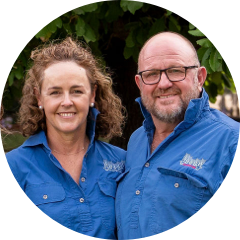Improving winter cropping systems in the Riverine Plains
This project was completed in 2009.
WHY THIS PROJECT WAS NEEDED
The management of crops following wheat tend to be the least profitable in the cropping rotation. Riverine Plains investigated options for improving the profitability of these crops, including wheat on wheat.
Previous projects have also highlighted that considerable spatial variation exists in paddock conditions. Work confirmed that it is better to treat paddocks according to this variation, as opposed to applying general paddock rates of inputs and produced advice on the best technologies and strategies to use when undertaking a more site-specific approach to input allocation.
This project investigated the case for variable rate and also investigated management options for crops grown on wheat stubbles. Considerable ground-truthing including soil testing, crop monitoring and soil moisture monitoring was undertaken to confirm real differences between delineated zones.
In short: This project investigated the profitability of crops following wheat. The project showed wheat after wheat (second wheat) can be viable given appropriate disease protection and proper nitrogen management. Variable rate approaches using zone-specific inputs also proved beneficial.
Project outcomes
The key findings of this project were that:
- Wheat following wheat can be a viable alternative particularly to growing crops such as lupins and canola
- To maximize yields, wheat after wheat requires protection from root diseases and possibly more nitrogen than would be required by wheat after canola
- Using barley or triticale in the crop rotation is a more economic option than a higher proportion of canola or lupins
- Barley and triticale require high inputs (similar to wheat) to maximise their yield potential
- Barley grain quality is not significantly affected by N or fungicide applications until the yield is maximized
- Wheat responds to 5-10 kg/ha of P at high soil test levels (80 mg/kg Colwell) in dry years
- Crops with low initial tiller numbers can be manipulated to yield well.
Conditions in paddocks driving underlying fertility and yield potential vary considerably and inputs should be applied according to the needs of individual zones as opposed to general paddock applications. EM surveys, elevation maps and yield maps are all important when zoning paddocks. Once boundaries are drawn, zones should be ground-truthed and input rates can then be determined through soil test results and/or previous nutrient removal based on yield maps.
Following the first wheat crop in a rotation, profits will be maximised by:
- Keeping the percentage of alternate crops such as canola and pulses to the minimum required for a sustainable rotation in terms of disease breaks
- Using barley on some wheat stubbles
- Treating barley and triticale the same as wheat in terms of inputs of fungicide and nitrogen
- Controlling root diseases if wheat is growing on wheat stubbles, which would then see wheat on wheat as an additional profitable option.
Additional results can be found in Making Money out of Precision Agriculture.
This final report, includes:
- Crop comparison experiment
- Wheat maximum yield experiment
- Barley maximum yield experiment
- Triticale maximum yield experiment
- Wheat fungicide experiment
- Barley fungicide experiment
- Wheat phosphorus and nitrogen experiment
- Wheat inputs experiment
- Wheat trace element experiment
- Sulphur and zinc experiment.
Find out more
For further information. please email info@riverineplains.org.au
Project investment
This was an investment of the Grains Research and Development Corporation (GRDC).
Focus areas
MORE ON Grains
Our research enhances food production, increases environmental resilience and improves community connection across the Riverine Plains. See how our research creates impact.
-
Grains
Sustainability
-
Grains
Business
-
Grains
Sustainability
-
Grains
Livestock
-
Grains
Livestock
-
Grains
Sustainability
-
Grains
Business
-
Grains
Sustainability
-
Grains
-
Grains
-
Soils
Grains
-
Grains
Soils
-
Drought
Grains
-
Soils
Grains
-
Grains
-
Grains
Soils
-
Soils
Grains
-
Fodder
Grains
-
Grains
-
Grains
-
Grains
Soils
-
Sustainability
Grains
-
Grains
Sustainability
-
Soils
Grains
-
Grains
Sustainability
-
Livestock
Grains
-
Grains
Soils
-
Sustainability
Grains
JOIN RIVERINE PLAINS
Riverine Plains provides opportunities to see new research and innovation, connect with rural communities, and attend informative events.


